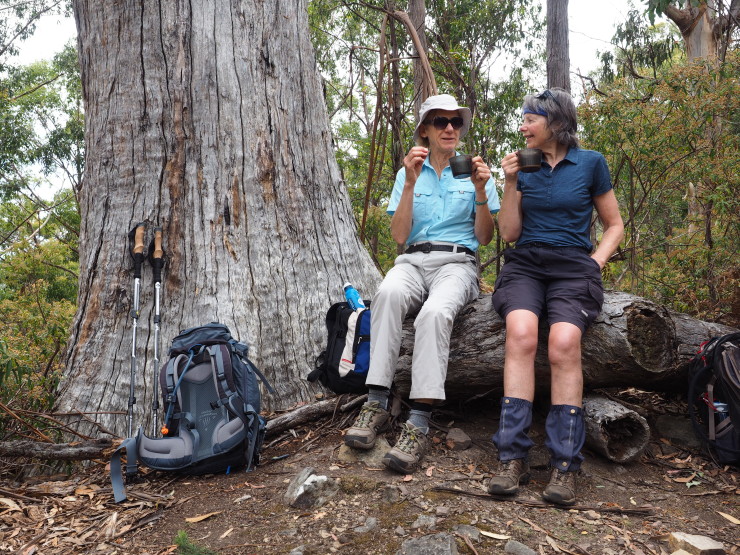5 ways to prevent blisters – By Bob Marley

5 ways to prevent blisters – By Bob Marley
Posted on
It’s a little known fact that Bob Marley enjoyed a number of walking holidays in his time but he hated blisters. In fact, he wrote a song about it.
You might have heard of it. it goes lalala “my feet is my only carriage..”
He called his little ditty “No Woman No Cry”. I’m not sure if his title really hit the mark though. What he probably meant was “No blisters no cry”, and oh yes, we get that. Blisters on a multi-day walking holiday can certainly lead to tears.
Below we tell you exactly how you can avoid these party poppers – in five easy steps.
Step 1: Don’t sit around in government yards in Trenchtown – get walking to condition your skin and toughen those feet up.
How did Bob expect to avoid blisters with such poor preparation? You can learn from his mistakes though and get walking early. Start at least a few weeks before your holiday. Or better yet, make walking part of your weekly/daily routine, whether you have a holiday coming up or not.
Wear the shoes you plan to wear on your long walk. If they’re uncomfortable after a couple of walks, consider buying a new pair. But don’t think on it too long – the longer you have to wear in your new hiking shoes, the better.
Just a note. The aim of toughening your feet up isn’t to build tough ole callouses, but to condition your skin to be more resistant to stress.
Step 2: Don’t push on through – no matter what Bob says.
If you feel any uncomfortable spots, hot spots, or pain on your feet, stop and take a look at what’s going on. Don’t push through and wait until the end of the walk because then you’ll be in blister treatment territory. We want to stay in the blister prevention zone.
Sometimes just putting your feet up for ten minutes will help cool your feet and reduce swelling and pain. At morning tea or lunch breaks sit down, take off your shoes and enjoy the relaxation time.
Sometimes you’ll have to do something more to reduce the friction that is causing you discomfort.
Step 3: Don’t let Georgie light the fire – treat hotspots before they turn into blisters.
If you’ve conditioned your feet and you develop a hot spot (which may be red, tender, sore, feel like a bit of sand stuck between your toes etc) it’s likely that it was caused by friction against part of your foot. Here are some suggestions for reducing the heat and preventing a blister from forming:
- Tape your feet to reduce friction between your skin and your sock. We use Fixomull but you can use other thin tapes like Leukoplast, Rock Tape or even plain old paper tape that’s used to hold gauze bandages on. You want it thin enough that it doesn’t interfere with the fit of your shoe.
- Don’t use cotton socks. They absorb moisture and more moisture means more friction.
- Try double socking. First, wear a thin pair of socks next to your foot (synthetic fibers are usually best because these have better moisture wicking properties) and a thicker outer pair over that. Toe-socks act like a double socking system between your toes.
- You can use a slippery patch, like Engo (http://www.goengo.com), which sticks inside your shoe to reduce friction between your sock and your shoe.
- Silicone gel toe sleeves are lovely for preventing or cushioning toe blisters and give all over toe coverage. They can get a bit sweaty though.
Step 4: My feet is my only carriage – how to treat a blister once it’s developed
Sometimes you can’t, or don’t want to, stop walking just because you’ve got a blister or two. Here are some things that might help reduce the pressure and the friction that caused your blisters.
- Make a donut pad and tape it around the blister. You might use an adhesive felt or moleskin material. These then get taped on with Fixomull.
- Silicone gel toe sleeves, mentioned above, are good for cushioning all sorts of toe blisters.
- Put a pair of sandals into your case so you can walk without any rubbing on your blister.
- Tie your shoe or boot tighter to stop your foot from slipping and causing further friction. Here’s a good video with some lacing techniques https://www.youtube.com/watch?
v=SOE28brAcEc - Use a hydrocolloid dressing like Compeed on blisters where the roof of the blister has been removed. If you put these dressings on a blister with an intact or torn roof, they will rip the blister roof off when you remove them.
Step 5: In this bright future you can’t forget your past – learn what works for you and what doesn’t
The beauty of walking regularly before a big walking holiday is that you learn where you’re most likely to get blisters and what treatments work for you. Don’t wait until you’re on the Cape to Cape or the Oxfam Trailwalker to find out that your heels get tender and Fixomull tape works a treat. Understand your feet and the areas that you’re likely to get hotspots, then put together a blister kit to take with you whenever you hike.
Now sing with me
Ev’rything’s gonna be alright
Ev’rything’s gonna be alright
Ev’rything’s gonna be alright
No blisters no cry…



